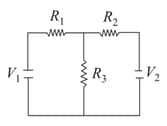Kirchhoff's Laws and Their Applications
Kirchhoff's Laws and Their Applications: Overview
This Topic covers sub-topics such as Kirchhoff's Law, Kirchhoff's Second Law, Kirchhoff's First Law, Finding Potential Difference between Two Points in an Electrical Circuit and, Method to Solve Complex Circuit Using Kirchhoff's Law
Important Questions on Kirchhoff's Laws and Their Applications
Which of the following rule may be used to obtain the values of the three unknown currents in the branches (shown) of the circuit given below?
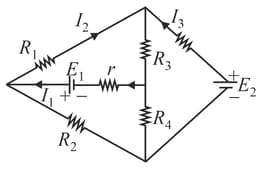
Apply Kirchhoff’s rule to the loops and to find currents and in the network.
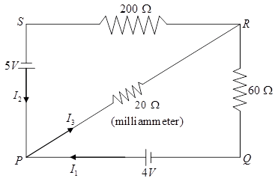
Apply Kirchhoff’s rules to the loops and to write the expressions for the currents and in the network.
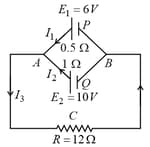
State Kirchhoff’s rules. Use these rules to write the expressions for the currents and in the circuit diagram shown.
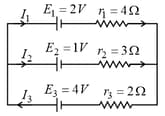
Two cells of emf and and internal resistance and respectively are connected in parallel to pass a current in the same direction through an external resistance of .
Using Kirchhoff’s laws, calculate the current through each branch of the circuit and potential difference across the resistor.
The magnitude and direction of the current in the following circuit is

A current of flows in the circuit as shown in figure. The value of potential difference between the points and will be
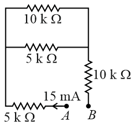
For the given figure, identify the relation between currents according to
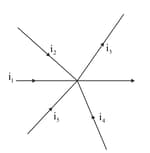
In the circuit shown in the figure, reading of voltmeter is when is closed, reading of voltmeter is when only is closed and reading of voltmeter is when both and are closed. Then -
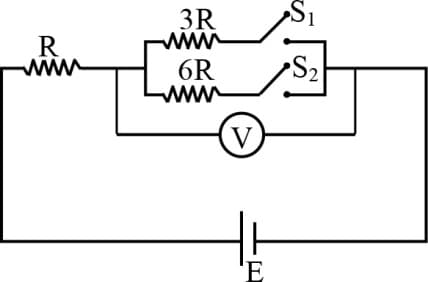
In the shown circuit the resistance can be varied
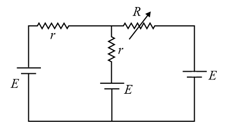
The variation of current through against is correctly plotted as:
Kirchhoff's first law and second law, proves the
The box in the circuit below has two inputs marked and and a single output marked The output obeys
, if
, if
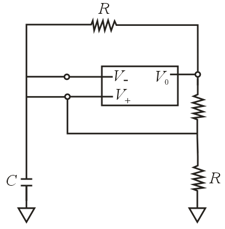
The output of this circuit a long time after it is switched on is best represented by:
A student was trying to construct the circuit shown in the figure below marked (a), but ended up constructing the circuit marked (b). Realizing her mistake, she corrected the circuit, but to her surprise, the output voltage (across ) did not change.
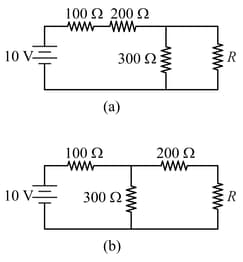
The value of resistance is :-
Consider the part of the circuit shown. What is the value of current if the battery is ideal?
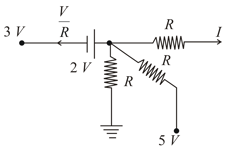
The circuit shown consists of three identical resistances and three identical voltmeters. Reading of first and third voltmeters are volt and volt. Calculate the reading of second voltmeter.

Kirchhoff's first law is based on conservation of
If the diodes are ideal in the circuit given below, then the current through the cell is
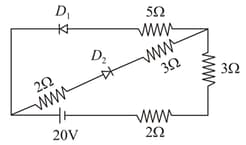
Find the magnitude of flowing current in of following circuit, when a constant voltage is kept between
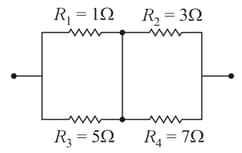
A cell with internal resistance and cell with internal resistance and external resistance are connected in parallel. The current in ampere through cell is
Consider the circuit as shown below. In the circuit and The current flowing through resistance is
